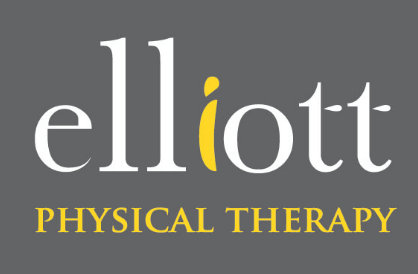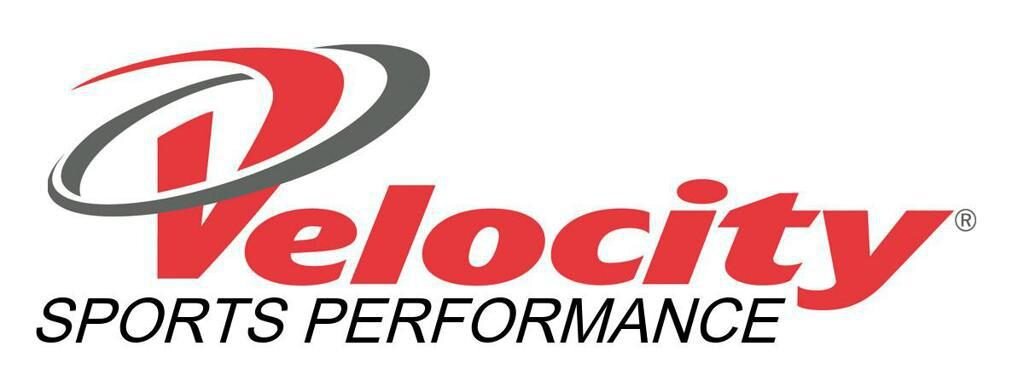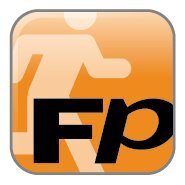Mental training designed for physical therapists
6-week virtual mental training Course - weekly meetings designed to help pt’s enhance their mindset, apply mental skills to their patients, and develop personal leadership skills
Topics include motivation, confidence, Visualization, achieving goals, increasing positive thinking, and developing a growth mindset
cost: $200 - Includes 6 weekly sessions and workbook
who we work with
What our clients say about working with us
“Christyan’s course on visualization was very informative but at the same time practical. Since taking his course I continue to feel like I have a strong handle on instructing my clients on proper visualization as well as creating an audio message for my clients to use for their specific sports or activities to put into practice. Overall I would recommend this course for anyone looking to utilize this technique for themselves or if they want to better coach this training tool with their athletes.”
“The concepts reviewed and practiced within this presentation are practical and applicable for all athletes and clients. The process was broken down in such a way that simple cueing can be provided to the client. On the other hand, awareness was created so the provider can start to apply and trial these concepts with clients prior to potential referral to a mental performance coach.
”
“I was introduced to Christyan through my company leadership training. I am the Clinical Director of a family owned private practice physical therapy company on the South shore of Boston. Christyan helped me identify my inner “why” or passions, which helped motivate myself individually; but also empowered my team and patients to find their inner drive to achieve their life goals. Christyan also provided strategies to overcome adversity, increase self awareness, and develop good habits to achieve goals. Working with Christyan helped our company optimize our communication and relationship skills to increase company morale, productivity, and overall positive growth and empowerment. I would highly recommend anyone looking to better themselves in all aspects of their lives to achieve peak performance.”
Top 3 Mental Skills to use
during and after Injury Rehab
Recovering from an injury can be an incredibly difficult and frustrating process. I have personally been through a few different injuries that have required rehab, including ACL/MCL/PCL/meniscus tear, multiple shoulder dislocations, and facial reconstruction surgery from a baseball to the face (that story is for another time though). Also, I have worked with hundreds of clients that are going through the injury rehab process. During all of these experiences, I have found that individuals who incorporated a mental training routine during their injury rehab process showed much more positive results during AND well after rehab.
Obviously with injury rehab there are a plethora of physical challenges that can be overwhelming. However, we often neglect or have a hard time defining the mental challenges as well. This is a common trend in many fields, for example the National Alliance on Mental Illness has reported that mental health professionals recommend physical activity for individuals with depression, anxiety, and many other mental health disorders (1). So the main issue is a mental one but a common prescription is a physical one. So why not apply the same logic to injury rehab. The main issue is a physical one, what I believe is that adding a mental practice to this physical issue will help improve the rehab process and decrease the negative impact during and after injury rehab.
Take a look at the 3 Mental Skills and try the mental exercises in each skill for a simple way to apply each skill.
Here are the Top 3 Mental Skills to use during and after injury rehab:
1) Thought Productivity
In a study done by the National Science Foundation, they found that, “the average person has about 12,000 to 60,000 thoughts per day. Of those thousands of thoughts, 80% were negative, and 95% were exactly the same repetitive thoughts as the day before.” (2) In my experience the number of negative thoughts increases significantly during injury rehab.
Therefore it is critical to have productive thoughts, especially during injury rehab. The more effective and productive your thoughts are the more effective and productive your game will be. So, here is a way to look at how to have more productive thoughts.
ETA = estimated time of arrival
Our thoughts provide us an eta to success. Just like a GPS tells you where to turn and how far you are from your destination, your THOUGHTS will be your guide to peak performance and recovery.
Let’s consider eta from a thought productivity perspective:
E: Event – anything that happens to you, big or small, random or planned, positive or negative.
T: Thought – mental interpretation of the event, what you say to yourself about the event.
A: Action – feelings and physical responses, can be inaction as well
an event occurs, you have a thought about it, that thought drives some sort of feeling and physical reaction that you express.
Let’s look at an example:
EVENT = You are really sore after PT and you were told you have not made much progress from last week.
THOUGHT = “This sucks, I’m never going to get back to playing like I used to.”
Action = head down, heart rate increasing, feeling anxious, upset, and frustrated.
do you think this thought will decrease or increase this individuals effort and motivation? Obviously decrease. Their thought lead them feeling discouraged and anxious. So let’s see what happens when we have the same event, but with a different thought:
EVENT = You are really sore after PT and you were told you have not made much progress from last week.
Thought = “This sucks, but I am working really hard and all this effort will eventually pay off.”
Action = take a deep breathe, feel relieved and motivated.
Do you think this thought will decrease or increase this individuals effort and motivation? Definitely increase! Their thought lead them to feel more optimistic and motivated to keep working hard.
Thoughts matter! By simply altering our thinking we get a tremendous boost! Take a look at the more optimistic thought, “This sucks, but I am working really hard and all this effort will eventually pay off.” This thought still starts out sort of negative. But we altered this thought using a great technique “, BUT…” this allows you to alter a potentially negative thought to a more optimistic and productive thought.
We won’t ever eliminate all our negative thoughts, but we can alter a lot of our negative thoughts Using “, but” and using ETA allows us to analyze and slow down our thinking so we can limit the impact of the negative and useless thoughts.
2) Visualization
The APA defines Visualization as, the process of creating a visual image in one’s mind or mentally rehearsing a planned movement in order to learn skills or enhance performance.” (3)
In the study referenced by Dr. Doidge, the researchers found that simply visualizing yourself doing an exercise increased their muscle strength by 22% (4). This happens because visualization activates similar neurons that connect our brain to our muscles, so while you may not be physical exercising simply visualizing yourself doing a movement provides nearly similar muscular benefits.
Sample Visualization script for a knee injury. Created by AASP (Association of Applied Sport Psychology) (5). I would recommend recording yourself say this script on your phone and then listen to it while laying down or sitting in a comfortable position with you eyes closed.
Take a few deep breaths … Concentrate on your breathing, feel the movements of your body … Just relax, sink into the chair/couch
Now focus your attention on your hurt knee … Notice what it feels like … See what it looks like, the swelling, bruising … Concentrate on reducing the swelling … Imagine a leak in your knee and see some of the fluid drain out … Concentrate on the swelling going down … See your knee returning the its normal size … Concentrate on the swelling going down … As your swelling reduces, notice your knee feeling more normal
Now turn your attention to feeling the knee getting stronger … See the ligaments coming together … Feel the ligaments getting tighter, growing together … Concentrate on the fibers getting bigger, stronger, tighter … Feel your knee getting stronger
Scan the muscles around the knee … Begin concentrating on your quad … Relax the muscle … Feel the muscle become loose and relaxed … To further relax the muscle imagine your quad being massaged … Feel the muscles being kneaded … Notice the relaxed feeling in your quad and all around your knee
Notice how your knee feels … concentrate on feeling relaxed … feeling stronger … You are getting better … enjoy the feeling
Visualization is a powerful and underutilized mental skill that has incredible benefits, especially during injury rehab. One of the most difficult parts of the rehab process is actually fully rehabbing and coming back to your sport. This can be a time of anxiety and uncertainty due to the lack of practice and fear of re-injury. This is where using visualization during rehab pays off tremendously. By utilizing the time you would have been practicing or playing to visualize certain movements you are keeping your mind engaged in your sport. Visualization keeps the neurons active and firing, and When your neurons are active and firing during rehab you are setting yourself up to have a more seamless transition back to your sport. Visualization can help keep you engaged in your sport during rehab and calm the nerves of coming back to your sport.
I would recommend adopting a visualization practice for at least 10 minutes a day. I would suggest starting by simply breathing deeply, closing your eyes, and seeing yourself at practice just playing loosely and having fun. Try to focus your attention on doing basic movements, for example if you are a hockey player just imagine yourself skating with the puck and making and receiving passes. Once you have a clear picture of those basic movements you can add more complex things like shooting or weaving through defenders.
Visualization allows you to stay engaged and active in your game both mentally and physically. and Honestly, It gives you something to do during rehab that keeps you in the game! I think that is one of the best benefits of visualization, it allows you to stay busy working on your craft, even if it is from the sidelines for a short while. developing a visualization practice during rehab can help you limit the potential negative impacts of returning to sport and gives you another tool to use when you are back to take your game to another level.
3) Attention Control
Attention is defined as, “the act or state of applying the mind to something”. (6)
Control is defined as, “to direct the behavior of someone or thing”. (7)
From those definitions, I believe Attention Control is the act of applying our mind and directing our behavior to achieve an outcome.
All too often the most talented of individuals fall short because of a lack of focus on what is truly important. Attention Control is a skill that is trainable and extremely valuable to our success during and after rehab.
We can train the skill of attention control in many ways. Here is a simple mental exercise you can try that will enhance your reaction time and help you shift your attention smoothly and quickly.
CONCENTRATION GRID Activity
START A 1-2 MIN TIMER AND FIND THE NUMBER 22 ON THE GRID, AND THEN FIND THE SUBSEQUENT NUMBERS (23, 24, 25 ETC IN ORDER) TILL THE TIMER GOES OFF. TRY THIS WITH DIFFERENT STARTING NUMBERS TO TRAIN YOUR VISUAL ACUITY AND SPEED UP YOUR REACTION
IF YOU WANT TO CHALLENGE YOURSELF FURTHER, TRY FINDING A NUMBER AND THEN ADD 3 TO THE NUMBER YOU FOUND AND FIND THAT NEW NUMBER (EX. FIND 6 THEN ADD 3 TO THAT SO THEN YOU FIND 9, THEN 12, THEN 15, ETC). I would recommend adding this mental exercise when doing your Home PT program. You get the most out of this mental exercise when you add a physical exercise to it.
THis activity has MANY WAYS TO MIX IT UP AND KEEP YOUR BRAIN SHARP! THIS IS ONE OF MY FAVORITE MENTAL EXERCISES, IT TRAINS VISUAL ACUITY, MENTAL SPEED, AND REACTION TIME. IT’S GREAT FOR ATHLETES HAVING TO MAKE QUICK DECISIONS WHILE TAKING EFFECTIVE ACTION. (EX. RECEIVER CATCHING A BALL IN TRAFFIC, SHOOTING A PUCK THROUGH congested areas, GOALIES BLOCKING A SHOT, etc).
attention control is one of the most important skills to achieve peak performance. The best of the best have actively trained this ability to apply their mind and direct their behavior to achieve ultimate success. During your injury rehab is a great time to work on this mental skill. Start with this simple mental exercise and contact us to schedule an appointment so we can give you dozens of other mental exercises that will keep your mind sharp and improve your focus and concentration so you can apply your mind to what is most important and direct your behavior to achieve the success you want.
all 3 of these mental skills can enhance your injury rehab experience. applying these mental skills will improve your mindset, keep your mind and body engaged in your craft, and enhance your ability to stay cool, calm, and collected long after rehab is done!
Contact us today to schedule a consultation and learn more about how to apply these, and many other, mental skills to your injury rehab.
Just like a GPS tells you where to turn and how far you have to go, your THOUGHTS will be your guide to peak performance and recovery.
“In an experiment that is as hard to believe as it is simple, Drs. Guang Yue and Kelly Cole showed that imagining one is using one’s muscles actually strengthens them. The study looked at two groups, one that did physical exercise and one that imagined doing exercise. Both groups exercised a finger muscle, Monday through Friday, for four weeks. The physical group did trials of fifteen maximal contractions, with a twenty second rest between each. The mental group merely imagined doing fifteen maximal contractions, with a twenty-second rest between each, while also imagining a voice shouting at them, “Harder! Harder! Harder!” At the end of the study the subjects who had done physical exercise increased their muscular strength by 30 percent, as one might expect. Those who only imagined doing the exercise, for the same period, increased their muscle strength by 22 percent. The explanation lies in the motor neurons of the brain that “program” movements. During these imaginary contractions, the neurons responsible for stringing together sequences of instructions for movements are activated and strengthened, resulting in increased strength when the muscles are contracted.”
“Attention is the taking possession by the mind, in clear and vivid form, of one out of what may seem several simultaneously possible objects or trains of thought…It implies withdrawal from some things in order to deal effectively with others.”
References:
1) https://www.nami.org/Blogs/NAMI-Blog/May-2016/Exercise-for-Mental-Health-8-Keys-to-Get-and-Stay
2) https://tlexinstitute.com/how-to-effortlessly-have-more-positive-thoughts/
3) https://dictionary.apa.org/visualization
4) https://www.brainmaster.com/software/pubs/brain/contrib/The%20Brain%20That%20Changes%20Itself.pdf









